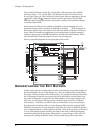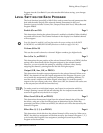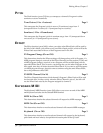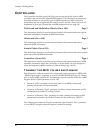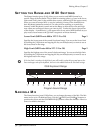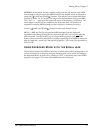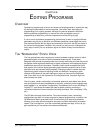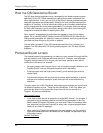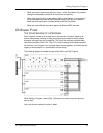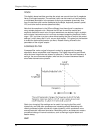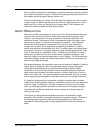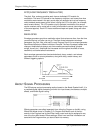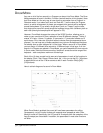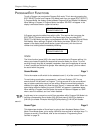
Editing Programs: Chapter 6
CHAPTER 6
EDITING PROGRAMS
OVERVIEW
Synthesizer programming is the art and science of shaping sounds in a particular way
by altering the parameters of various modules. Like music itself, learning synth
programming is an ongoing process. Although this manual presents information
about synthesizer programming, no manual can offer a complete course in
programming (at least for a price that customers would be willing to pay!).
If you’re new to synthesizer programming, the best way to learn is to adjust different
parameters as you play to discover how different parameter values affect the sound.
Also, become familiar with the signal and modulation flow within the QS (as shown in
the various block diagrams included in this manual) so that you can understand the
many ways in which you can process a signal as it works its way from oscillator to
output.
THE “NORMALIZED” SYNTH VOICE
The first synthesizers were comprised of various hardware modules, some of which
generated signals, and some of which processed those signals. These were
designed to be general-purpose devices since nobody was quite sure how they would
be applied; some engineers used them as signal processors, while keyboard players
treated them as musical instruments. Therefore, patch cords connected the inputs
and outputs of the various signal generating and processing modules (which is why
particular synth sounds were called patches). Changing a patch involved manually
repositioning patch cords and adjusting knobs and switches; recreating a patch
required writing down all the patch settings on paper so they could be duplicated
later. Even then, due to the imprecision of analog electronics, the patch might not
sound exactly the same.
Over the years, certain combinations of modules seemed to work better than others,
and since patch cords were troublesome to deal with, eventually these modules were
wired together in a “normalized” configuration. Synthesizers such as the MiniMoog™,
Prophet-5™, and others eliminated the need for patch cords by containing a
normalized collection of sound modules (including oscillators, filter, envelopes, LFOs,
etc.).
The QS offers the best of both worlds. The most commonly-used, normalized
configurations are built-in to every program for ease of programming. In addition, the
QS Modulation Matrix gives back much of the flexibility of a modular synthesizer,
allowing you to map various modulation sources to multiple destinations for special
needs. If you’re a beginner, all of the normalized pathways are easy to find; as you
gain experience you can explore more advanced features.
QS7/QS8 Reference Manual 47



